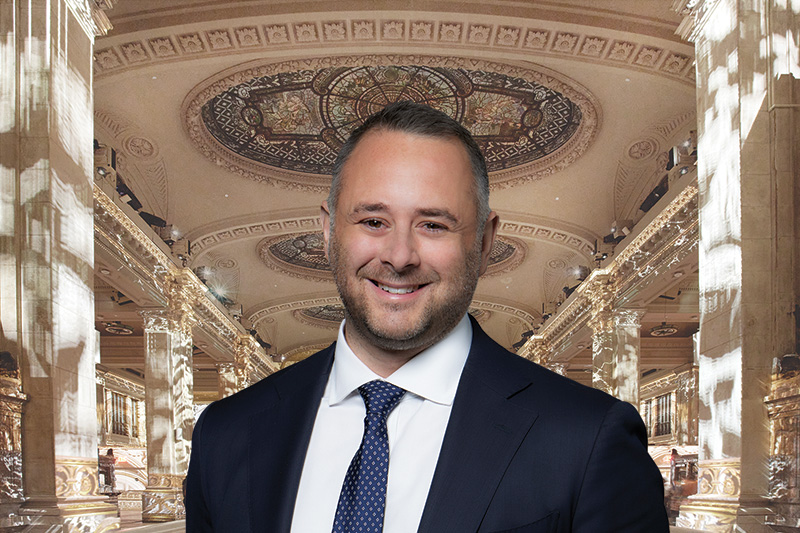Today’s workplaces have a lot more in common with retail locations than ever before. For retail, the rise of online shopping has given consumers options to comfortably shop from home, and thanks to the pandemic, office workers have discovered how to comfortably work at home too. In both situations, retailers and companies alike are challenged to get people off the couch and into physical locations. Retailers have always had progressive ideas to drive store traffic and those ideas can translate into creating desirable office spaces. A workplace culture is no different than a retail brand as both embody the character and personality of an organization, representing the things that make the business or brand unique, so using similar traffic-driving strategies really does make sense.
Retail brands are constantly seeking innovative ways to entertain and engage customers and a growing strategy right now is experiential retail. Forward-thinking concepts like experiential design, when done right, drive foot traffic and enhance the in-store experience, ultimately driving sales and brand loyalty. In fact, recent research shows that nearly 60% of consumers expect the majority of retail space be focused on experiences, not product, in the next two years and they are willing to pay more for experiences that enhance their in-store time. That same approach can be used to increase employee satisfaction with the office and there are three key, experiential retail ideas that easily translate to the workplace.
Making Personal Connections
If you think about the workplace as a retail location, it’s a space that needs to inspire, entrench the brand, and allow for unique experiences by making personal connections with everyone using the space. The stronger the connection is to the physical workplace, the stronger the appeal to spend time there. The space needs to reflect not just the personality of the company brand, but also organizational strategies, operational frameworks, and the business goals of the company. The challenge is to design for today’s workplace reality, which is no longer about having an open, flexible workspace but an evolution reflecting how people really work.
Making personal connections means the workplace design be there for the people, not the other way around. Take, for example, the new Sage + Sound store on New York’s Upper East Side. This luxe wellness brand makes strong personal connections with its customers by recognizing the importance of wellness and mindfulness in their lives. Even before the store opened, the owners blessed black tourmaline crystals and buried them under the store’s floor, as it’s believed the stone rids the mind of negative energies involving anxiety and anger. The scent, lighting, sound, and other sensory elements create a memorable and immersive experience for this retailer, and office spaces can incorporate similar multi-sensory experiences to create a more engaging and stimulating environment, with features such as natural lighting, aromatherapy or other sensory features. These kinds of personal connections can really make the moments matter for employees while they are in the workspace.
Adding a Little Bit of Magic
Surprise and delight are at the core of experiential retail concepts and that same approach can be used by companies looking to increase employee satisfaction in the workplace. Offering a little surprise and delight in the workplace is important as employers have recognized that for most employees, the home office has turned out to be better than they had imagined. Workers need a reason to believe that it’s worth the effort to be in the office and one answer to that is to create a little magic.
A great example of a magical retail experience right now is Hall des Lumières, which is an immersive public art experience located in the former Emigrant Industrial Savings Bank, in New York City. This Historic Landmark Building has been transformed into a completely immersive experience where people can experience 30-foot high, custom displays of well-known art, often synchronized to original music.
It attracts art lovers looking for a new experience, but also people who may never step foot in a traditional museum who are attracted to this innovative new way to interact with artists and their work. While this magical, multi-media art experience isn’t right for every workplace, employers can borrow on the immersive experience concept. Making the workspace visually interesting through the use of bright colors, interesting textures, and unique design elements, can ultimately inspire creativity and boost productivity, making the workspace an experience that cannot be replicated at home.
Bringing together both digital and physical experiences in the workplace is becoming increasingly important as more and more companies adopt digital technologies to improve operations and enhance the employee experience.
– James Harrison, Vice President
Integrating Digital and Physical Experiences
Like many retailers who use interactive kiosks for customizing products and making purchases, employers can use interactive screens allowing employees to access digital tools and data while also being able to physically interact with the work environment. For example, digital access can be used for booking rooms and workspaces and are as easy to use as a tap on a smartphone.
Augmented reality (AR) is other concept that blends the digital and physical environments. While it’s becoming popular in retail entertainment experiences, it can also be an effective and entertaining tool in the workplace. AR can be used to overlay digital elements onto physical spaces, creating a more interactive and immersive experience for employees. This can be especially useful for training and onboarding, as well as for hands-on tasks such as assembly or repair work. It’s also helpful for displaying information about office equipment and enhancing wayfinding in a space.
By borrowing these ideas from experiential retail concepts, office space designers can create more engaging and dynamic work environments that support employee well-being, productivity, and creativity.
About the author
James Harrison is the Vice President of Development at Schimenti. With a wealth of experience in the construction industry spanning over 17 years, James has reshaped and driven strategic planning and service delivery for world-class brands such as Apple, Tiffany & Co., and Tishman & Speyer. James appreciates the collaborative aspect of the construction industry and enjoys interacting with individuals from diverse backgrounds and skill sets. James has a proven track record of delivering exceptional results on projects for prestigious clients such as Live Nation and Cartier and possesses a customer-focused attitude, always striving to exceed expectations. He takes pride in working alongside a talented and dedicated team and is committed to promoting diversity, equity, and inclusion in the workplace.


